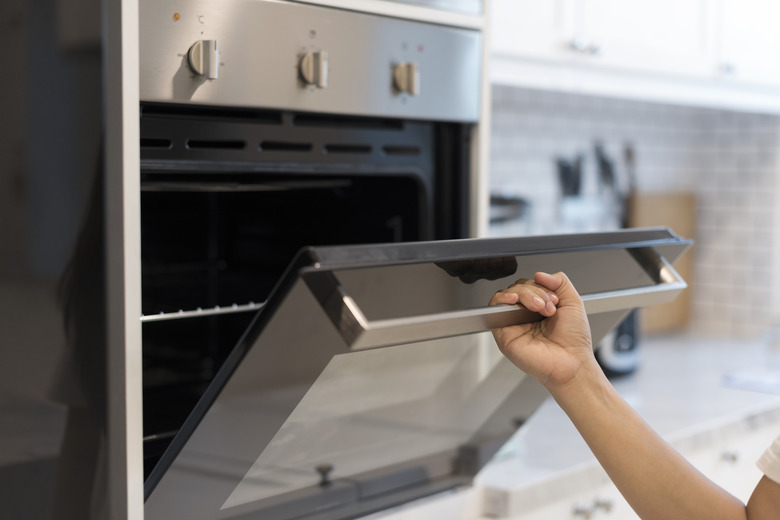Are All Plates Oven Safe?
Not all plates are safe to put in the oven, and even oven safe dinner plates may break unless you take precautions. Not all plates come with use guidelines. Vintage plates, hand-crafted plates and imported plates may offer no clue, and may present health risks in addition to the possibility of breakage due to temperature changes.
Tip
Not all plates are safe for the oven. Follow your plates oven-use guidelines prior to using in the oven.
What Are the Risks?
What Are the Risks?
There are two primary risks to using non oven-safe plates in your oven. The first, and more straightforward, is called thermal shock. If a dish that's not meant for use in the oven is subjected to rapid heating or cooling, it creates stress that may cause it to crack, shatter or even explode. Even heat-resistant materials can shatter if they're not handled according to the manufacturers' instructions. At best this wastes food, and at worst can cause serious injury.
A more subtle risk comes dinnerware which may no longer be considered food safe, or which is only food safe at room temperature. This primarily affects older plates.
Modern Dinnerware Recommendations
Modern Dinnerware Recommendations
Many manufacturers label the plates so you don't have to guess about their use guidelines. This labeling appears on the back of the plate, usually in or near the center. Some plates are labeled oven-safe, microwave safe and dishwasher safe. Toaster oven dishes go further, allowing for closer proximity to the heating elements. Others are microwave safe, but aren't intended for use in standard ovens, convection ovens or toaster ovens.
Even if a plate is labeled oven-safe, manufacturers often specify temperature limits such as not heating the plate above 300 to 350 degrees Fahrenheit depending on its material. Manufacturer websites usually have use instructions that include safe temperatures for their plates.
Important Dish Safety
Important Dish Safety
Glass plates, unless they are specifically labeled as oven safe or microwave safe, pose a risk of injury if heated. Antique plates can pose a special risk. Although post-1960 ceramic plates are generally oven-safe, some older ceramic and glass plates may contain radioactive materials.
Red-orange Fiestaware, certain similar glazed items, and yellow glass colored with uranium known as vaseline or canary glass emit radiation. The U.S. Environmental Protection Agency says not to use these items for food or drink, so keep these out of the oven.
Melamine and Decorative Plate Hazards
Melamine and Decorative Plate Hazards
Any plate labeled decorative or "for decoration only" should not be used for serving food and shouldn't be heated in any type of oven. Usually their glazes aren't considered food-safe and may contain lead. Melamine plates are not oven safe and the FDA advises against using melamine in microwave ovens. Melamine is made from melamine-formaldehyde resin, and the melamine can contaminate food at 160 F and above.
Simple and Safe Considerations
Simple and Safe Considerations
If a plate isn't labeled, especially if it's antique, vintage, handmade or imported, the safest course is to refrain from using it in any kind of oven. Older or imported stoneware, pottery and ceramic plates may have lead in their glaze, which can contaminate your food. Even oven-safe plates should never be used in a broiler or in direct contact with any heating element, such as a burner. Sudden changes in temperature or contact with water or wet surfaces can cause a heated plate to break, even if it's labeled oven safe.
